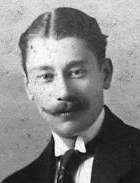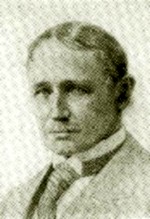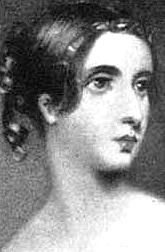Ta
Tampoe, Phillips Balendra (“Bala”) (1922– present)
Born Negombo, son of an excise officer stationed in Bangalore, India. Educated at Royal College, Colombo, and the University of Ceylon, 1939-43. Joined Lanka Sama Samaja Party during WWII. Worked at the Department of Agriculture. Led Kandy branch of General Clerical Services Union in May-June 1947 strike. General Secretary, Ceylon Mercantile, Industrial and General Workers’ Union, 1948-present. Qualified as a lawyer, 1953. Ran for parliament (Colombo Central electorate), 1960. Split from LSSP in opposition to coalitionism, 1964. Married May Wickramasuriya, assistant secretary of the CMU since 1956, in 1966. Secretary, LSSP(R), 1964-73. Secretary, Revolutionary Marxist Party, 1973. Defended JVP prisoners in court after 1971 insurrection. Advisory Board, Global Labor Institute, 2004. Resides in Colombo and still leads the CMU.
Compiled by Charles Wesley Ervin
Tapsell, Walter
Elected to the CPGB’s Executive Committee in 1929, representing the Young Communist League. He was subsequently the manager of the Daily Worker, and was a Battalion Commissar in the International Brigades when he was killed in Calaceite in April 1938.
Tarrida del Marmol, Fernando (1862-1915)
 Born in Santiago, Cuba, Tarrida’s family moved to Spain when he was a child. As a student Tarrida was a republican, but soon developed into an anarchist. In opposition to the sectarianism of the movement, Tarrida advocated an “anarchism without adjectives.” He was arrested in 1896 in a roundup after an attentat in Barcelona and held in the torture prison of Montjuich. After his release he moved to Paris, where he wrote a number of articles for the avant-garde literary journal La Revue Blanche, recounting his prison experiences, attacking Spanish authorities, and defending the cause of Cuban, Puerto Rican, and Philippine independence. His exile later took him to Belgium and England, where he remained active in anarchist circles until his death.
Born in Santiago, Cuba, Tarrida’s family moved to Spain when he was a child. As a student Tarrida was a republican, but soon developed into an anarchist. In opposition to the sectarianism of the movement, Tarrida advocated an “anarchism without adjectives.” He was arrested in 1896 in a roundup after an attentat in Barcelona and held in the torture prison of Montjuich. After his release he moved to Paris, where he wrote a number of articles for the avant-garde literary journal La Revue Blanche, recounting his prison experiences, attacking Spanish authorities, and defending the cause of Cuban, Puerto Rican, and Philippine independence. His exile later took him to Belgium and England, where he remained active in anarchist circles until his death.
See Tarrida Archive.
Ta Thu Thau (1906-1945)
Born 1906, organised successful demonstration in 1926 in support of jailed nationalist leaders, and founded the Youth Party. Went to France in 1927 where he joined the Vietnamese Independence Party. VIP soon split between Trotskyist and Stalinist groupings. A number from both groups were deported to Vietnam in 1930, where TTT and others founded Indochinese Communism, a section of the Left Opposition. IC led the nationalist struggle in the South. In 1932 IC suffered a split, with TTT leading the majority in favour of utilising all legal opportunities. TTT was jailed with 120 others of all the Communist groups, and a United Front between IC and the Stalinists in the South was formed to free them. The Front held until 1937, when the Stalinists were forced by the Comintern to withdraw. TTT was soon imprisoned again, and spent the war in a concentration camp, where he was brought near to death by maltreatment. After the fall of the Japanese, TTT was murdered by the Stalinists in Sep 1945.
Taxil, Léo (1854-1907)
 Born in Marseille Marie Joseph Gabriel Antoine Jogand-Pagés, after being educated by the Jesuits he embarked in 1875 on a career as an anti-clerical writer, founding a bookstore/publishing house, the Librairie Anti-Cléricale, numerous anti-clerical newspapers, and publishing countless books and pamphlets, including “No More Cockroaches,” “The Sacred Pornographers,” and “Sacred Foolishness.” Frequently condemned by the courts for his vicious attacks on the church – and in particular the Jesuits – he was excommunicated.
Born in Marseille Marie Joseph Gabriel Antoine Jogand-Pagés, after being educated by the Jesuits he embarked in 1875 on a career as an anti-clerical writer, founding a bookstore/publishing house, the Librairie Anti-Cléricale, numerous anti-clerical newspapers, and publishing countless books and pamphlets, including “No More Cockroaches,” “The Sacred Pornographers,” and “Sacred Foolishness.” Frequently condemned by the courts for his vicious attacks on the church – and in particular the Jesuits – he was excommunicated.
His popularity as an anti-religious writer flagging, and ever in search of celebrity and money, in 1886 he announced his renunciation of his past beliefs, was absolved by Pope Leon XIII (only three years after having written a book entitled “The Poisoner Leon XIII and the Canon’s Five Milion”), and began a second career as anti-Masonic propagandist. Supported by the pope and the Catholic Church he wrote prolifically against the Masons, publishing books with titles like “The Masonic Assassinations,” “Freemasonry Unmasked,” books of alphabetical lists of the names of Freemasons, and a newspaper called “Christian and Anti-Masonic France.” Interestingly, though fond of discovering plots, he refused to indulge in the anti-Semitism so common at the time, and wrote against the leading anti-Jewish publicist of the period, Édouard Drumont.
Between 1892-1895, under the pseudonym of Doctor Bataille, there appeared a work concocted by Taxil and another anti-Masonic writer, Carl Hacks, “The Devil in the Nineteenth Century,” which purported to be an eyewitness account of satanic Masonic rituals. The fraud about to be revealed, in 1897 he held a press conference in which he exposed his own fraud, thanked the church for its support, and finished his days as a proofreader.
His life and exploits are central to Umberto Eco’s 2010 novel “The Prague Cemetery.”
Further Reading: No More Cockroaches.
Taylor, Frederick Winslow (1856-1915)
 U.S. engineer and management consultant, originator of the concept of "scientific management" to increase worker output. Taylor grabbed public attention in the 1880s when he reduced the number of workers shovelling coal at the Bethlehem Steel Works from 500 to 140 without loss of production.
U.S. engineer and management consultant, originator of the concept of "scientific management" to increase worker output. Taylor grabbed public attention in the 1880s when he reduced the number of workers shovelling coal at the Bethlehem Steel Works from 500 to 140 without loss of production.
According to Taylor, industrial productivity was lower than it ought to be due to two factors: deliberate malingering by workers and unscientific design of work practices by management. He held that workers could be forced to put the maximum effort into work by a combination of motivating them with higher wages, financed on the basis of higher productivity, and most significantly, by closely monitoring the worker’s every movement so that it was impossible to go slow without detection. In order to achieve the maximum productivity, Taylor proposed that instead of reducing the number of "unproductive" workers to a minimum, about 25% of all employees should be dedicated to supervising, monitoring, measuring and accounting. This was the beginning of the stratification of the working class into more and more layers of supervisory, administrative and technical workers, enjoying privieleges over and above the "blue-collar" trades they supervised.
The symbol of Taylor’s management methods was the stop-watch, ever-present as supervisors conducted "Time and Motion Studies", timing every hand-movement, every step, every breath a worker made. Hatred against the stop watch built up to such a pitch that by 1912 laws were passed in the U.S. banning the use of stop-watches in the civil service.
Lenin studied "Taylorism" with a view to applying the progressive and genuinely scientific aspects of his theory to Soviet inudstry.
Further Reading: Principles of Scientific Management.
Taylor, Harriet (1807-1858)
 Harriet Taylor, the daughter of Thomas Hardy, a London surgeon, and his wife Harriet Hurst, was born on 8th October, 1807. At the age of eighteen she married John Taylor, a wealthy businessman from Islington. In the next few years Harriet had three children.
Harriet Taylor, the daughter of Thomas Hardy, a London surgeon, and his wife Harriet Hurst, was born on 8th October, 1807. At the age of eighteen she married John Taylor, a wealthy businessman from Islington. In the next few years Harriet had three children.
John and Harriet Taylor both became active in the Unitarian Church and developed radical views on politics. They became friendly with William Fox, a leading Unitarian minister and early supporter of women’s rights. Harriet Taylor moved in radical circles and in 1830 she met the philosopher John Stuart Mill. Taylor was attracted to Mill, the first man she had met who treated her as an intellectual equal. Mill was impressed with Taylor and asked her to read and comment on the latest book he was working on.
Harriet Taylor’s relationship with her husband began to deteriorate and in 1833 he agreed to a trial separation. Harriet moved to a house at Walton-on-Thames where John Start Mill visited her at weekends. Although Harriet Taylor and Mill claimed they were not having a sexual relationship, their behaviour scandalized their friends. As a result, the couple became socially isolated.
Over the next few years Harriet Taylor and John Stuart Mill exchanged essays on issues such as marriage and women’s rights. Those essays that have survived reveal that Taylor held more radical views than Mill on these subjects. Taylor was attracted to the socialist philosophy that had been promoted by Robert Owen in books such as The Formation of Character (1813) and A New View of Society (1814). In her essays Taylor was especially critical of the degrading effect of women’s economic dependence on men. Taylor thought this situation could only be changed by the radical reform of all marriage laws. Although Mill shared Taylor’s belief in equal rights, he favoured laws that gave women equality rather than independence.
Except for a few articles in the Unitarian journal Monthly Repository, Taylor published little of her own work during her lifetime. However, Taylor read and commented on all the material produced by John Stuart Mill. In his autobiography, Mill claimed that Harriet was the joint author of most of the books and articles that were published under his name. He added, “when two persons have their thoughts and speculations completely in common it is of little consequence in respect of the question of originality, which of them holds the pen.”
In 1848 John Stuart Mill’s Principles of Political Economy was published. Mill planned to include details of the role that Taylor had played in the production of the book, but when John Taylor heard about this he objected and references to his wife were removed. However, in his autobiography, Mill pointed out that Principles of Political Economy was “a joint production with my wife.”
John Taylor died of cancer on 3rd May, 1849. Still concerned about gossip and scandal, Harriet insisted that they wait two years before they got married. A few months after the wedding the Westminster Review published The Enfranchisement of Women. Although the article had been mainly written by Taylor, it appeared under John Stuart Mill’s name. The same happened with the publication of an article in the Morning Chronicle (28th August, 1851) where they advocated new laws to protect women from violent husbands. A letter written by Mill in 1854 suggests that Harriet was reluctant to be described as joint author of Mill’s books and articles. “I shall never be satisfied unless you allow our best book, the book which is to come, to have our two names on the title page. It ought to be so with everything I publish, for the better half of it all is yours.”
John Stuart Mill had always favoured the secret ballot but Harriet disagreed and eventually changed her husband’s views on the subject. Taylor feared that people would vote in their own self-interest rather than for the good of the community. She believed that if people voted in public, the exposure of their selfishness would shame them in voting for the candidate who put forward policies that were in the interests of the majority.
Harriet Taylor and John Stuart Mill both suffered from tuberculosis. While in France seeking treatment for this condition in November, 1858, Harriet died. Mill and Taylor had been working on a book The Subjection of Women at the time. Helen, Harriet Taylor’s daughter, now helped Mill to finish the book. The two worked closely together for the next fifteen years. In his autobiography Mill wrote that “Whoever, either now or hereafter, may think of me and my work I have done, must never forget that it is the product not of one intellect and conscience but of three, the least considerable of whom, and above all the least original, is the one whose name is attached to it.”
As well as helping Mill with his books and articles, Helen Taylor was active in the women’s suffrage campaign. She was an original member of the Kensington Society that produced the first petition requesting votes for women. Helen also accompanied John Stuart Mill to the House of Commons on the day he attempted to add an amendment to the 1867 Reform Act that would have women the same political rights as men. However, the amendment was defeated by 196 votes to 73. Helen Taylor also took part in the agitation for women to be allowed to take part in local government and after the passing of the 1870 Education Act served as a member of the London School Board.
From Spartacus